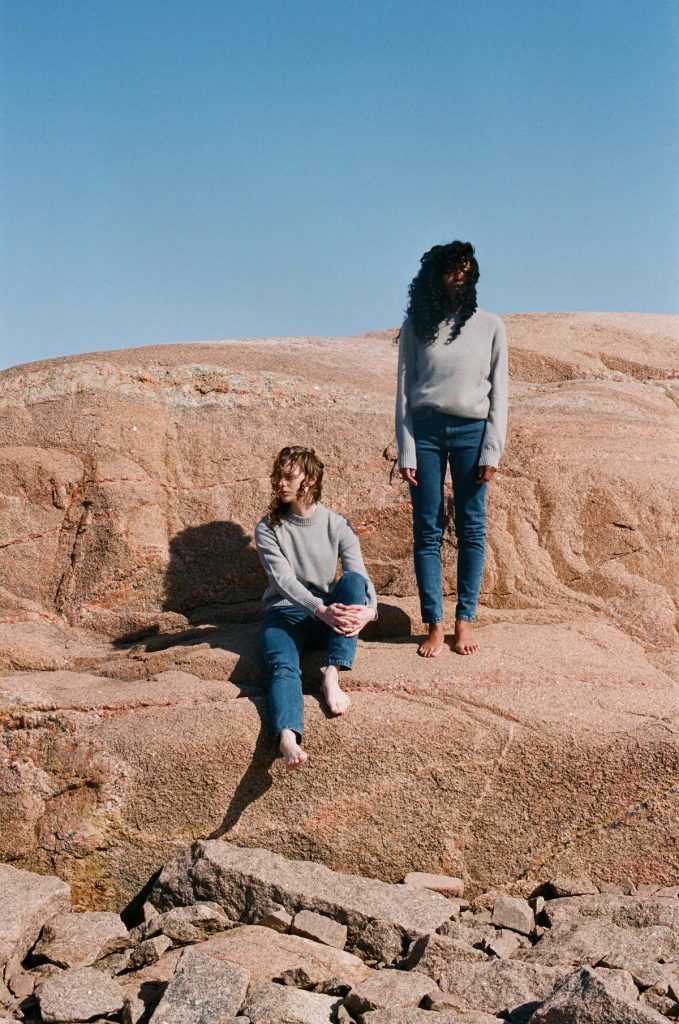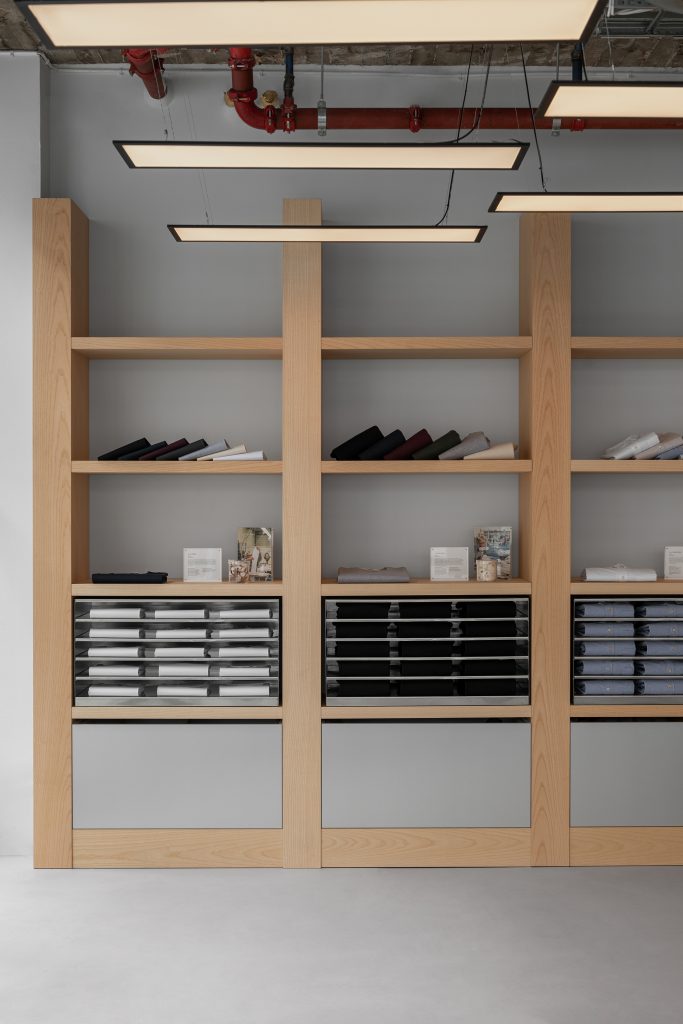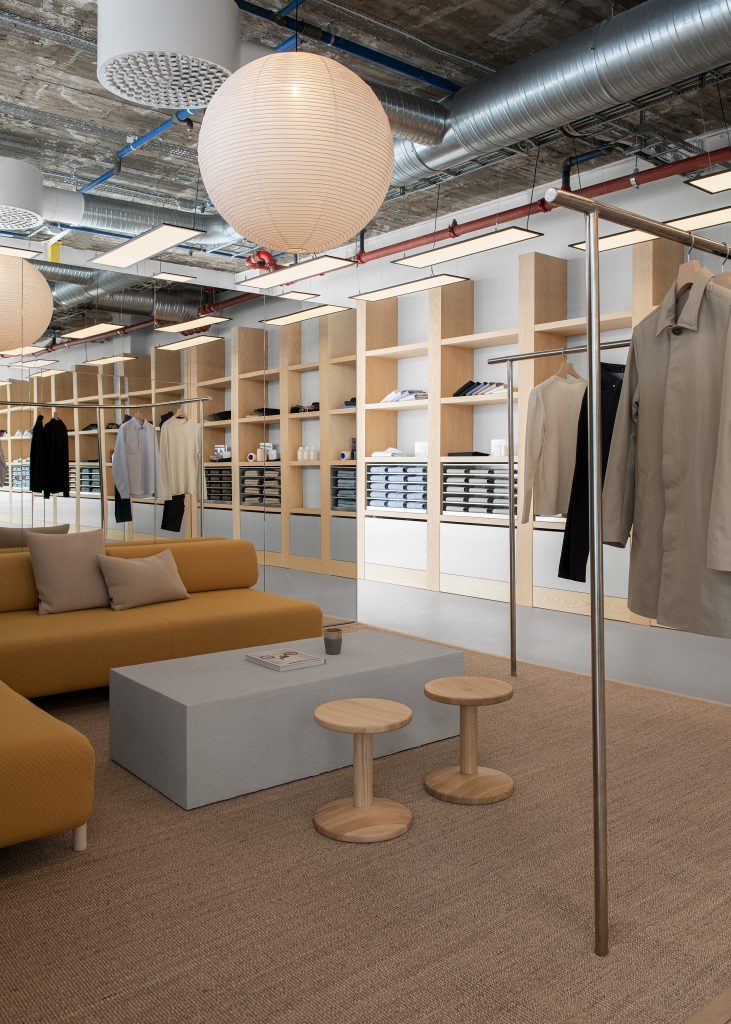
The Swedish startup launched in 2015, replacing seasonal collections, that fuels fast-consumption habits, with a single permanent collection of garments, characterized by transparency and accountability. ASKET calls them Meaningful Essentials.
— And we’re now set to do the same with womenswear, tells Sarah Arts, head of communications.
— A thoughtful collection, high on wearability, featuring the sort of pieces that will see women through, not only the weeks and months ahead, but years. We want to show people exactly what it takes to make their clothes, more like a journey, through our social media and newsletter — from the design process, to the material production, as well as meet our makers.



Tell us more about the range.
— As ever we’ll take it slow; starting with 3 of the most timeless essentials, the white T-shirt, the classic white shirt, and what we’re calling the Standard Jeans — a straight cut, mid-rise denim available in 50 sizes so everyone can find their perfect fit. The first production run of some 300 garments per piece will be mid-August and then we’ll go into full production by the end of the year. This fall, we’ll also introduce knitwear, tells Arts, continuing,
— Each garment is built from the fibre up and our product team worked hard to source the best farms and suppliers when it comes to quality and production practices. Our priority is finding those materials that will support the longevity and durability of our garments. And while no material is perfect, for the launch of womens, we are promising: GOTS certified organic cotton from the get-go. The jeans are a personal favourite in a heavier d13oz denim but with a hint of elasticity with biodegradable elastane developed by a creme of the crop mill that we work with.



Who do you imagine as the customer?
— The beauty of timeless essentials is that they work for everyone. As with menswear we hope to see women of all ages coming to us, from the teenager who wants to boycott fast fashion, to the 35-year old that wants to create a quality capsule wardrobe. We hope that when people own something that they can wear over and over, they’ll really start to bond with that piece, appreciate it, wear it for longer and not feel the need to replace their wardrobe all the time — it’s all about restoring a good old fashioned appreciation for clothes.


After launching as an online-only direct-to-customer brand, ASKET just opened the doors to their first physical retail store in central Stockholm.
— We work hard to create quality and long-lasting garments and in turn conveying the inherent value of a garment online, but nothing quite conveys the value of a garment better than getting tactile with it. So we see retail playing a very important role in our customer journey and understanding. Working with architects Specific Generic the design vision for the space was to keep the store uncomplicated, transparent, and honest — just like us and our garments, shares Arts.





The brand has launched several innovative initiatives recently. One that really stands out is The Impact Receipt, introduced last fall and, shares Arts, expected to be fully functional this summer.
— The idea has been brewing since early 2018. Back then, we’d just launched our Traceability Standard, with the goal of uncovering our entire supply chain, not only to hold ourselves accountable for our practices but also to share that with our customers, so that they could make informed decisions about the garments they chose to buy. At the same time, we started to see more and more brands touting their sustainability efforts. But for every neat initiative that is introduced, there are ten-fold that amount to mere lip-service. With many initiatives designed, not to educate customers, but convince them to continue shopping guilt-free. Yet, the reality is that every garment produced creates an environmental debt, so we wanted to come up with a way to sort the facts from the fiction. That’s when it dawned on us that the degree of visibility we had across our supply chain would allow us to dig deeper and uncover the true environmental impact of our garments and share that with our followers.
— While a traditional receipt represents proof of a financial transaction, the impact receipt goes far beyond the traditional itemized cash receipt. Instead, it breaks down and shares the true environmental impact of a garment’s creation, including; CO2 emitted, the amount of water required, and energy consumed. One of the biggest challenges is getting hold of the data that reflects our supply chain, with 35 garments we have over 400 processes and locations to get to grips with and it’s taken us longer to complete this as well as refine the algorithm than we had anticipated.

You mentioned it, how every garment produced affects the environment. A steadily growing collection and now a women’s line might be hard to combine with the very foundation of your brand concept, to end overconsumption. How do you resonate with that?
— Overproduction is a direct result of fashion’s conventional business model. And while it might sound paradoxical — after all, we are in the business of selling clothes — we’re steadfast in the belief that curbing fast-consumption habits is by far the most effective way to reduce fashion’s impact on the planet. Our goal is to build a degrowth business model that breaks that overproduction cycle and at the same time steer the industry towards better practices across the value chain, tells Arts. She adds:
— By stepping out of fashion seasonal churn and instead introducing a single permanent collection, which we will cap out at some point, combined with slower production cycles and honest pricing for quality garments, we’re able to pay living wages in our supply chains. And, to build in healthy margins while charging customers for the real value of the clothes. This in turn helps restore long-lasting relationships between customers and their garments, while at the same time recalibrate the industry’s business model. The slow fashion pie can be just the same size in terms of value as the fast fashion pie — but at a fraction of the production.
ASKET also just launched their own version of a takeback program, called Revival.
— For too long fashion has operated on a linear model; make, use, dispose. In fact, globally 75% of discarded textiles are doomed for landfill or incinerator. A shocking statistic that we wanted to change. Since launching, our philosophy has been to create clothes that stand the test of time ensuring they are worn and used more. But after 6 years we learnt that some of our customers are done with their pieces, so we needed to take steps to support total lifecycle responsibility and play our part in ensuring they stay in use and out of landfill.
— The Revival Program will help customers do their part in being responsible with their garments, by asking them to send back their unwanted ASKET garment in return for a gift card. No matter the condition of the garment, we’ll work with a partner to make sure it’s put to the best possible use and retained at the highest value. Garments in pristine condition will be cleaned and resold by us through pop-up events. Likewise, lightly damaged pieces will be repaired or upcycled into new pieces or entirely different products also to be resold. The next step is to figure out how to take care of older or damaged pieces, either recycling them into new yarn to be used for making new clothes or as a last resort downcycled into rags or input material for other industries, like filling or insulation. We’re still firm proponents of buying less but better garments and treasuring the pieces you own — then only once you’ve exhausted those options can you rest assured that we’ll take care of your garment properly, Arts concludes.


